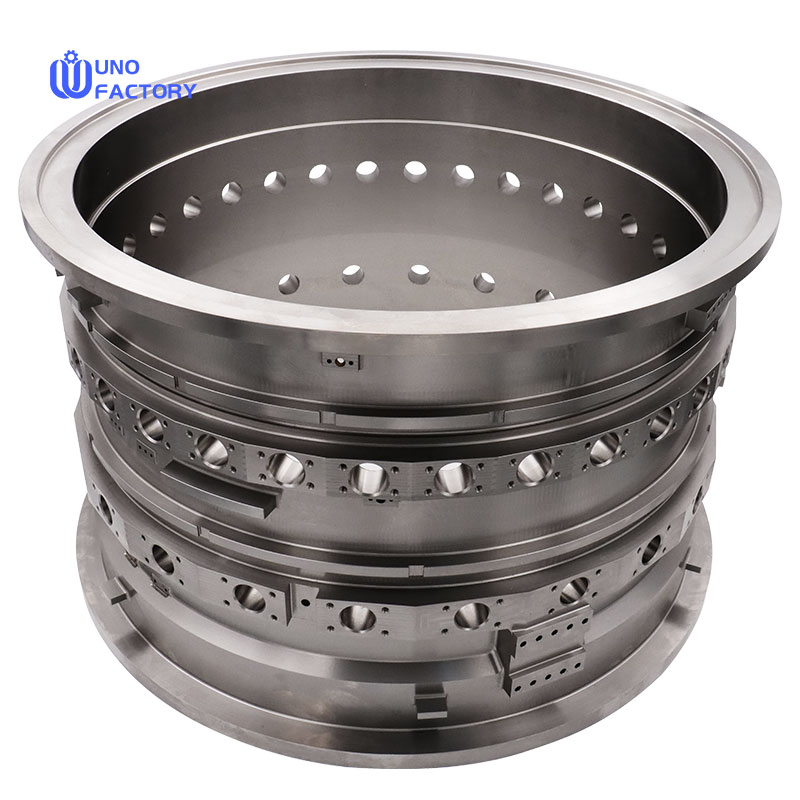Time to read: 6 min

Understanding 316 Stainless Steel
316 stainless steel, an austenitic alloy, is celebrated for its superior resistance to corrosion and pitting, particularly in acidic environments. It contains up to 0.08% carbon and 2-3% molybdenum, which significantly enhance its corrosion resistance and suitability for use at elevated temperatures.
Key Properties of 316 Stainless Steel:
- High strength and formability.
- Excellent resistance to corrosion and pitting.
- Good weldability and machinability.
- Utilizes a wide range of applications due to its balanced properties.
Typical Applications of 316 Stainless Steel:
- Marine equipment and components.
- Chemical processing equipment.
- Heat exchangers and pumps.
Deciphering 316L Stainless Steel
316L stainless steel, the low carbon variant of 316, is specifically designed to minimize carbide precipitation during welding. With a maximum carbon content of 0.03%, it offers improved resistance to intergranular corrosion, making it ideal for applications involving continuous exposure to corrosive media.
Key Properties of 316L Stainless Steel:
- Enhanced corrosion resistance due to lower carbon content.
- Excellent formability and weldability.
- High creep resistance.
- Utilized in applications requiring superior corrosion resistance and welding.
Typical Applications of 316L Stainless Steel:
- Food processing equipment.
- Chemical industry components.
- Marine hardware and high-end consumer products.
316 vs 316L Stainless Steel: A Comparative Analysis
Both 316 and 316L stainless steel share similarities in chemical composition, formability, and weldability. However, their differences are crucial for material selection:
Chemical Composition:
- 316L contains less carbon than 316, which reduces the risk of intergranular corrosion, especially after welding.
Corrosion Resistance:
- While both grades exhibit excellent corrosion resistance, 316L is preferred for applications involving frequent exposure to corrosive agents.
Mechanical Properties:
- 316L, with its lower carbon content, may not match the mechanical strength of 316 in certain conditions but offers better overall corrosion resistance.
Choosing Between 316 and 316L Stainless Steel
Selecting the appropriate stainless steel grade depends on your project's specific requirements. Consider the following factors:
- Corrosion Resistance: If your application involves exposure to harsh chemicals or marine environments, 316L may be the better choice.
- Welding Requirements: For projects that necessitate extensive welding, 316L's low carbon content can prevent cracking and provide a more stable weld.
- Cost and Availability: While 316L is generally more expensive due to its specialized properties, consider the cost implications against the benefits it offers.
Unofactory Expertise in Stainless Steel Fabrication
At Unofactory, we specialize in providing tailored manufacturing solutions using a variety of materials, including 316 and 316L stainless steel. Our expertise in material selection and fabrication ensures that your project meets its performance objectives while staying within budget.
Conclusion
The choice between 316 and 316L stainless steel hinges on a thorough understanding of their properties and how they align with your project's needs. Whether you require materials for rapid prototyping, sheet metal fabrication, or CNC machining, selecting the right stainless steel grade is vital for achieving optimal results. For assistance in material selection or fabrication services, consider partnering with experienced providers like Unofactory.




